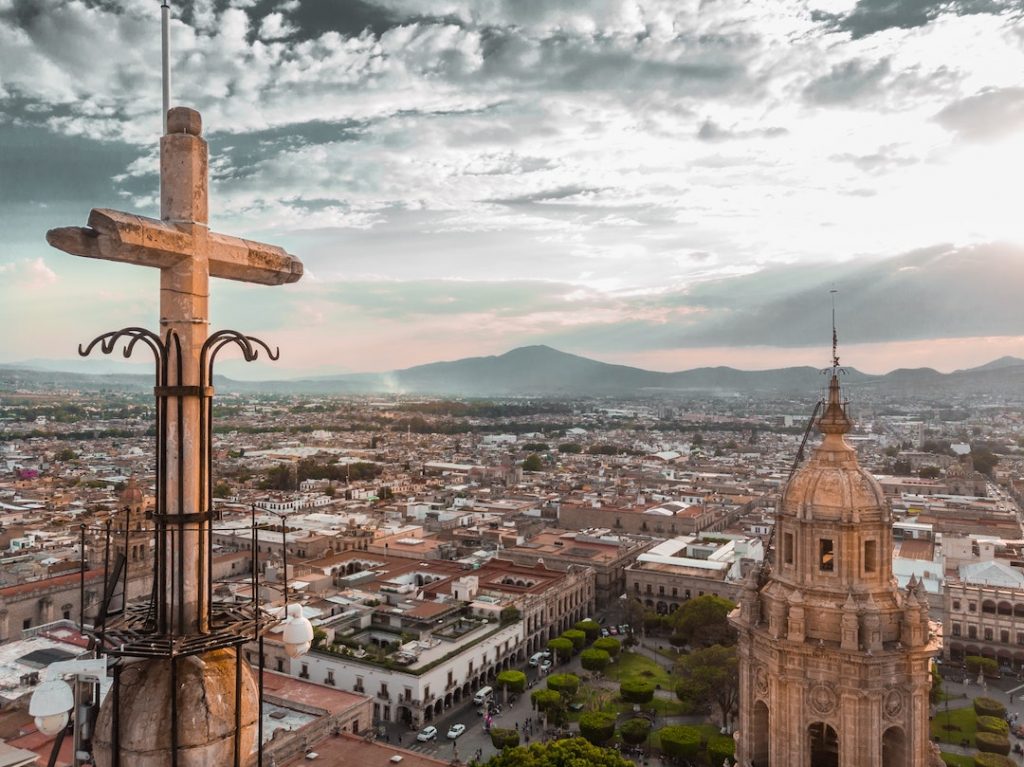Do you usually spend the festive season sunning yourself in the southern hemisphere, or enjoying a traditional white Christmas somewhere with guaranteed snow?
Things are a little different this year and although you might not be able to travel this holiday season, you can still bring international customs home with these festive traditions from around the world.
And who knows — maybe they’ll even provide inspiration for the holiday season next year when you can experience these traditions for yourself!
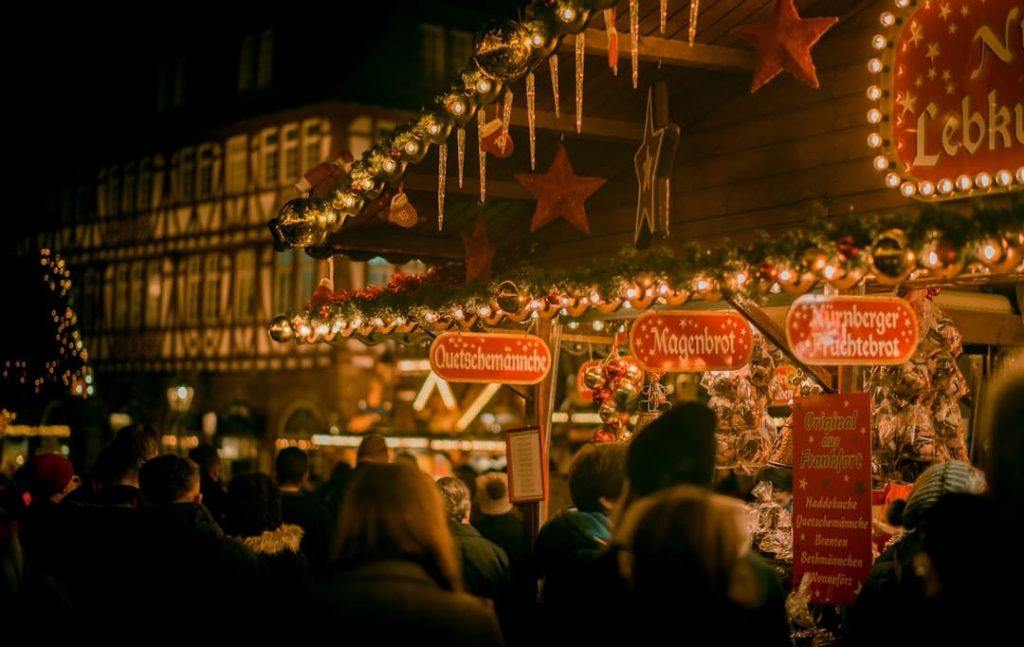
1. German Christmas traditions
Famous for its beautiful Christmas markets, Germany is a popular destination for those wanting to experience a different culture over the holiday season. With some of these German traditions, you can recreate some of that experience in your own home until it’s safe to travel again.
Sankt Nikolaus Tag is a special night for children in Germany. On the evening of December 5th, they clean and polish their boots to be left outside the front door before bed. The next morning they wake up and rush downstairs to find their boots filled with small gifts from St Nick!
To counter this, however, in many parts of Austria and Germany you’ll find Krampus roaming the streets on the same night. Krampus is the beastly anti-Saint Nicholas, who looks for naughty children to whip into shape!
A much nicer German tradition to recreate is the Advent calendar, which counts down the four weeks to Christmas. On each of these days, a small window in the Advent calendar is opened. Traditionally this would reveal a festive picture or poem but today many Advent calendars include a small piece of chocolate or candy, or even a gift.
Another tradition to bring into your home is the Advent wreath or Adventskranz. This is a wreath of pine cones, berries, dried flowers, and Christmas ornaments, with four candles to signify the four Sundays in December.
Traditionally, one candle is lit each Sunday in the run-up to Christmas, although today many families choose to burn them all on the last Sunday before the 25th whilst enjoying a festive day at home.
And of course, we can’t forget Glühwein — the deliciously spiced, warmed red wine that is served at Christmas markets across the German-speaking world. It’s easy to make your own at home on the stove with some spices, making it the perfect way to bring a touch of German festive cheer to your celebrations at home.
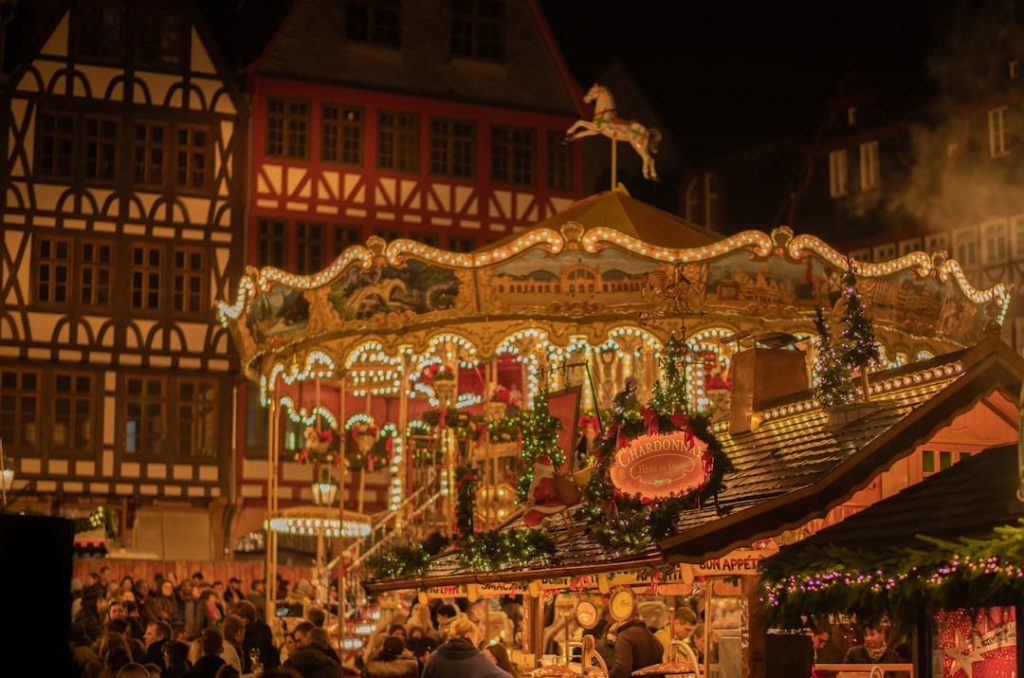
2. A very Italian Christmas
The holiday season in Italy kicks off on December 8th, which is the Day of the Immaculate Conception. On this day, Christmas decorations go up all over Italy, including in town squares and inside individual homes.
If you want to bring a bit of Italian festive cheer to your hometown, the eight days before Christmas, known as the Novena, is the time to do it. During this period, carolers spread joy with their traditional tunes — something you can easily recreate in your own neighbourhood.
If you’ve ever been to Italy, you’ll know that they take their meal times seriously — and Christmas is no exception! No meat is eaten on Christmas Eve, and it’s tradition to have a light meal in preparation for the next day, although many families will indulge in special fish dishes.
On Christmas Day, it’s time to go all out with traditional Italian dishes including pasta in brodo (pasta in bread) and panettone. This is one festive tradition we’re sure you’ll be happy to get on board with!
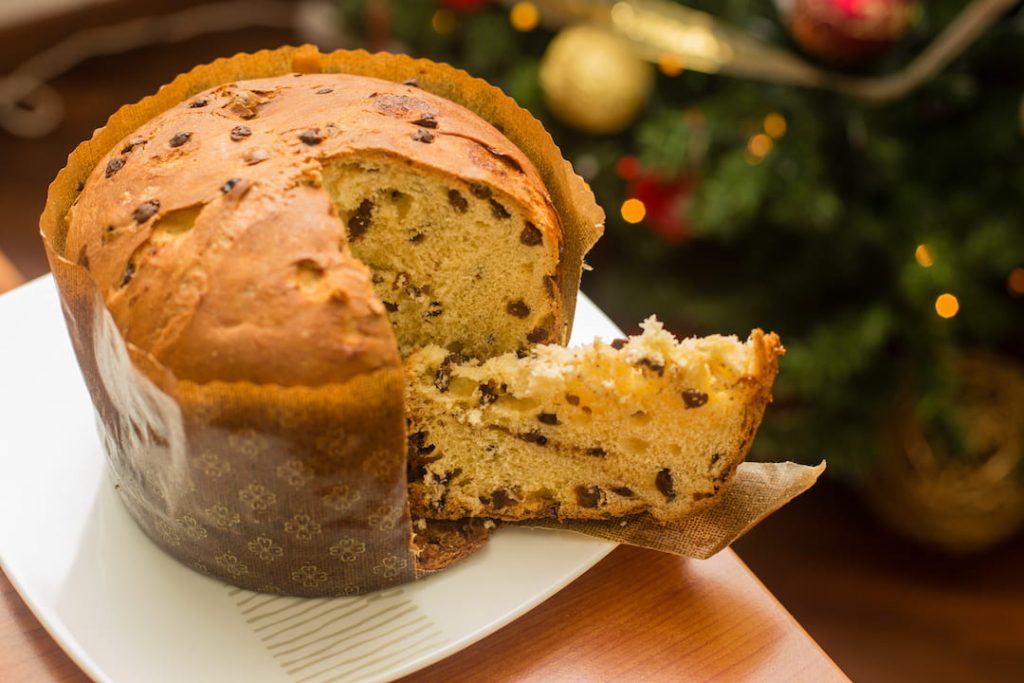
3. Christmas in Australia
If your idea of the festive season revolves around hearty roasts and huddling around an open fire, look to Australian festive traditions for a taste of how the holiday season is celebrated on the other side of the world.
Given the good weather over the festive period down under, many Australians enjoy a Christmas lunch of freshly caught seafood cooked on the barbeque. Specifically, Australians love to have BBQ prawns for their festive feast, with ten times more prawns being sold over the Christmas period than at any other time of year.
Often this meal is enjoyed outdoors in the sun, but if it’s too cold in your part of the world to eat al fresco, you could recreate a grilled seafood feast to be enjoyed from the comfort of your cosy home!
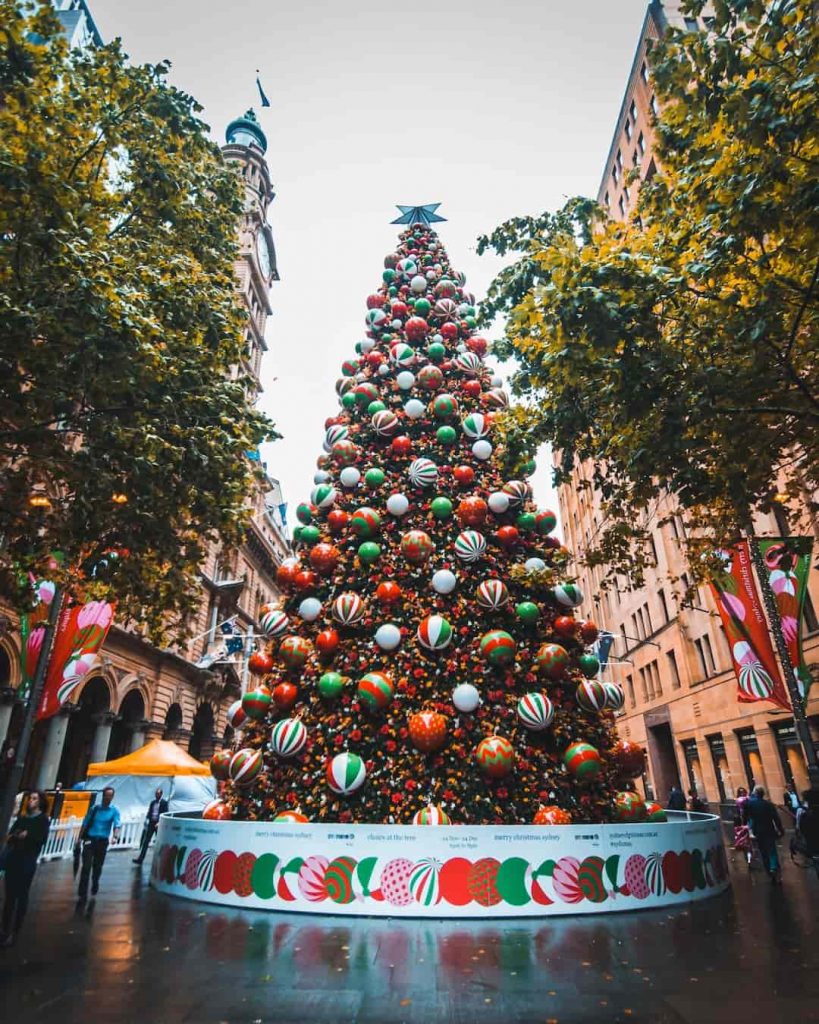
4. Christmas like the Canadians
Christmas in Canada involves wrapping up warm, whatever part of the country you’re in! Many celebrations over the holiday season are similar to elsewhere in the western world, including a big roast dinner on December 25th, decorated trees, and holiday parades.
The Santa Claus Parade in Toronto is one of the biggest and oldest Santa parades in the world. It’s been going since 1905, and is now broadcast worldwide on TV.
As a multicultural country, there are lots of other traditions in different parts of Canada that have been inspired by local cultures.
Many French Canadians celebrate Christmas on the 24th rather than the 25th of December, with a large feast known as Réveillon, which is enjoyed after attending Midnight Mass. In Quebec, the traditional meal was ragoût aux pattes de cochons, a stew made from pigs’ trotters — but many families today instead enjoy a meat pie made from venison.
In Newfoundland, many locals take part in ‘mummering’ (also known as mumming or janneying), a tradition that takes place during the twelve days of Christmas. Mummers dress up in a disguise and visit homes in their community to perform dances, songs, jokes or recitals.
The homeowner then guesses the identity of the mummers, and offers them something to eat and drink. In some places, if the hosts guess incorrectly, they must join the mummers on their journey and visit the next house with them.
A similar tradition takes place in some parts of Nova Scotia, where it’s called Belsnickeling. Here, people dress up in Santa costumes and again go door-to-door, for their hosts to guess which of their neighbours is visiting them dressed in a funny costume.
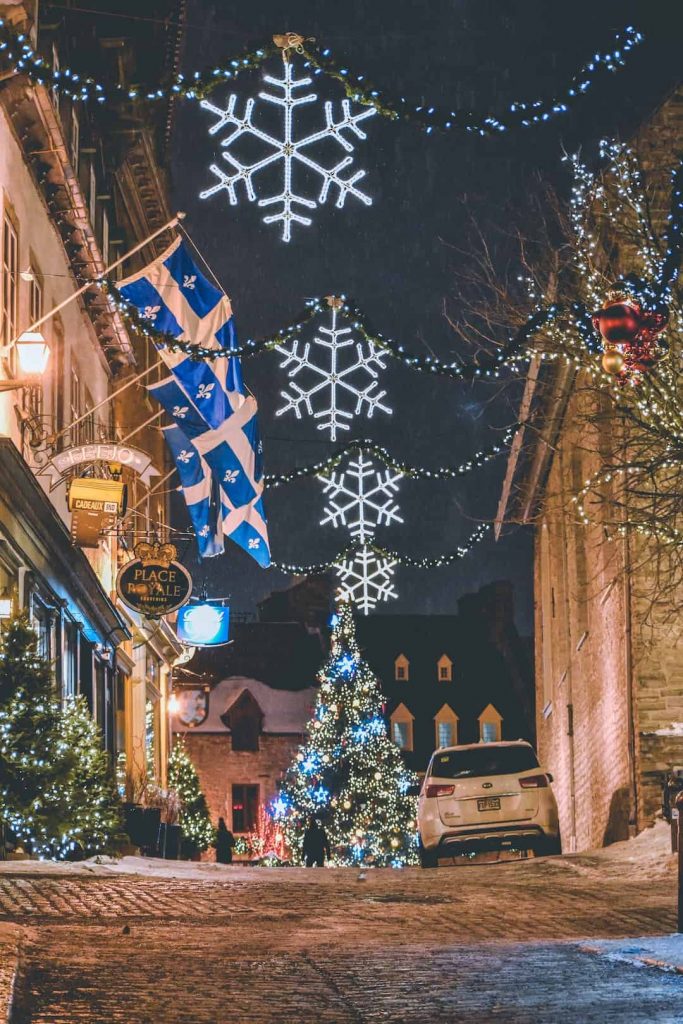
5. Holiday traditions in Israel
Hanukkah is widely celebrated in Israel during December, an eight-day festival of light that celebrates hope and freedom.
One of the most widely recognised symbols of Hanukkah is the menorah, a nine-branched candle that’s lit during the festival. And, of course, food is another key element of the celebrations, particularly in Israel.
One of the must-have foods is sufganiyot, which are round jam-filled doughnuts. Latkes — delicious fried potato cakes — are another popular food eaten during this celebration, and are meant to symbolise the oil that burned in the original menorah for eight days when it should only have lasted one.
There are many celebrations of Hanukkah across Israel during December, as well as smaller celebrations for Christmas, which are particularly focused on Bethlehem, where the original Christmas story took place. Here, there are tours on Christmas Eve which take you to all of the sites connected to the Christmas story.
Throughout the whole holiday period in Israel, towns and cities are lit up in celebration — something that you can easily recreate at home until you can experience the magic of the holidays abroad again.
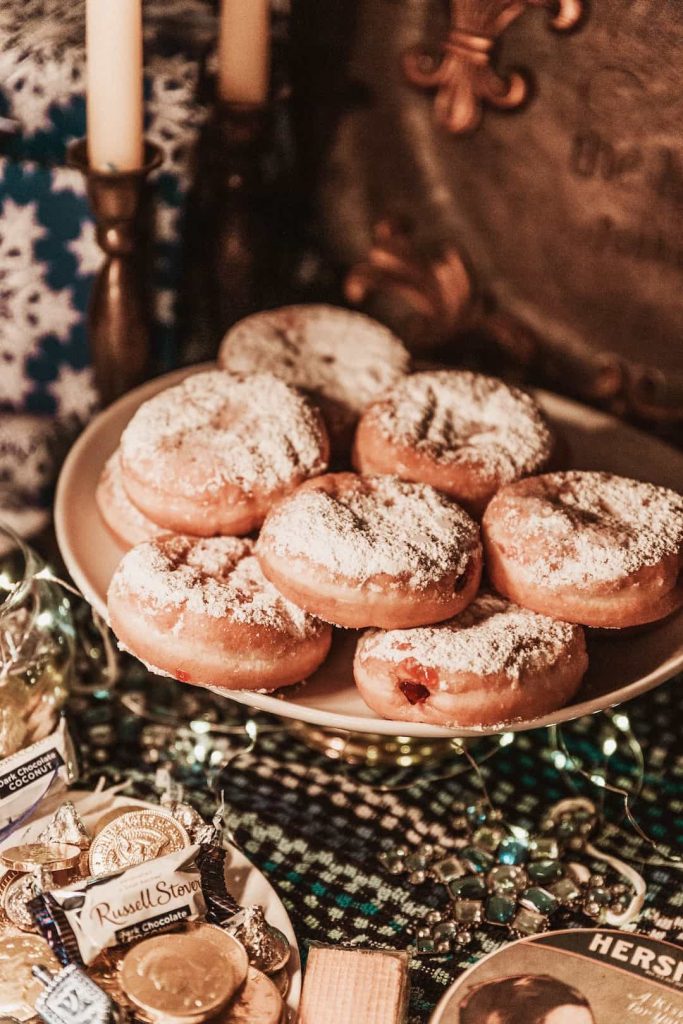
6. Holiday traditions in Mexico
In Mexico, La Posadas has been celebrated for over 400 years. It begins on December 16th and continues for nine evenings until Buena Noche, which is Christmas Eve. The word ‘posada’ means ‘inn’ or ‘shelter’ in Spanish, and this festival celebrates the story of Mary and Joseph’s journey to Bethlehem to seek shelter.
There are community celebrations every night leading up to Buena Noche, with a different focus for every night: humility, strength, detachment, charity, trust, justice, purity, joy and generosity.
It’s thought that the nine nights of the celebration represent the nine months that Jesus spent in Mary’s womb or the nine days of travel that Mary and Joseph took from Nazareth to Bethlehem.
One way to incorporate some of these Mexican traditions into your own holiday celebrations is to spend some time reflecting on the nine qualities that are meditated upon over the course of the nine nights.
On the ninth night, Christmas Eve, there’s usually a procession to the local church. This is often led by children who may be dressed up as Mary and Joseph, and a figure of Christ will be placed in the church’s nativity scene.
